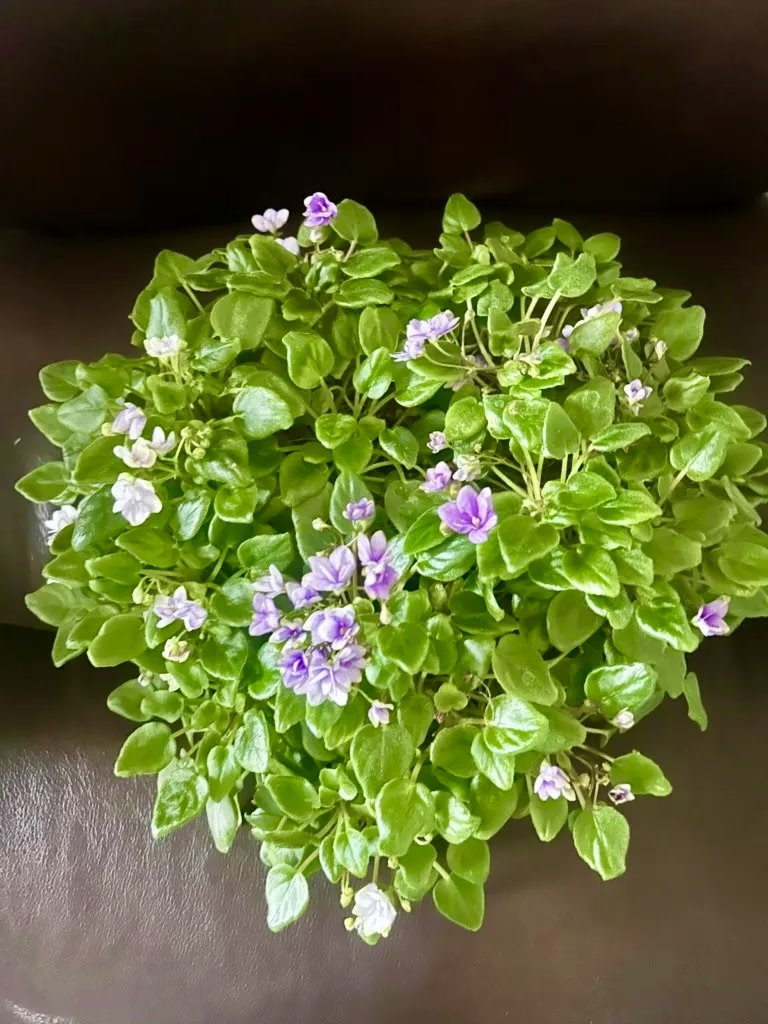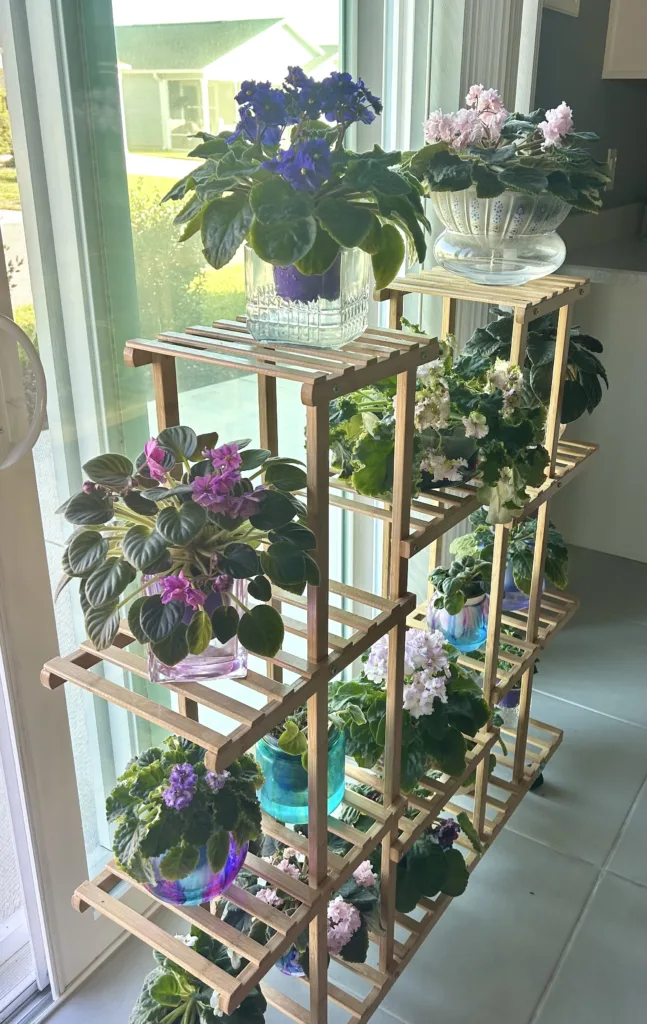
African violets are cherished for their vibrant flowers and fuzzy leaves. However, to keep these beauties blooming year-round, proper fertilization is essential. Many indoor gardeners underestimate the importance of feeding African violets regularly. In reality, the right fertilizer at the right time makes a big difference in leaf color, flower production, and overall plant health. Whether you’re a beginner or a seasoned grower, understanding fertilizer options and feeding schedules will help your violets thrive.
Why African Violets Need Regular Fertilizing
African violets grow in small pots, which means their roots quickly use up available nutrients. Without regular feeding, these plants may show signs of stunted growth, pale leaves, or reduced blooming. Fertilizer provides essential nutrients—mainly nitrogen (N), phosphorus (P), and potassium (K)—along with trace minerals like calcium, magnesium, and iron. Each of these plays a role in healthy leaf production, strong stems, and continuous flowering. While some potting mixes contain a small amount of fertilizer, these nutrients don’t last long. That’s why ongoing fertilizing is necessary.
Choosing the Right Fertilizer for African Violets
Several types of fertilizers are well-suited for African violets. You can choose from liquid, water-soluble powders, slow-release pellets, or organic options depending on your care routine.
Balanced Water-Soluble Fertilizers
A balanced water-soluble fertilizer with equal parts of nitrogen, phosphorus, and potassium—like a 20-20-20 or 14-14-14 formula—works well for general growth. These blends provide all the basic nutrients your plant needs in one application. Simply mix with water according to package directions and apply when watering.
Bloom-Boosting Fertilizers
If your African violet is growing well but not blooming, switch to a fertilizer with a higher middle number (phosphorus), such as 12-36-14. Phosphorus encourages flower bud production and enhances bloom size and color. These bloom boosters are especially helpful during peak flowering periods in spring and fall.
Urea-Free Fertilizers
Many growers recommend urea-free fertilizers because urea-based nitrogen can burn sensitive African violet roots over time. Look for labels that specify “urea-free” or check the nitrogen source listed. Nitrate-based nitrogen is gentler and more effective for violets, especially those grown under artificial lights.
Organic Fertilizer Options
If you prefer natural products, organic liquid fertilizers made from seaweed extract, fish emulsion, or worm tea are safe for African violets. While organic formulas may work more slowly, they nourish both plant and soil, improving long-term health. Choose a diluted blend and apply it regularly to avoid overfeeding.
Slow-Release Fertilizer Pellets
For growers who prefer low-maintenance care, slow-release fertilizer pellets can be mixed into the soil. These release nutrients gradually over time with each watering. However, be cautious not to overdo it. Too much fertilizer in a small pot can cause salt buildup and root damage.
Best Commercial Fertilizer Brands for African Violets
Several trusted commercial fertilizers are formulated specifically for African violets, making feeding easy and effective.
Schultz African Violet Plus Plant Food
Schultz African Violet Plus (8-14-9) is my favorite and what I have used for over 10 years now. This water-soluble liquid includes a dropper for precise measurement and is ideal for regular feeding. The higher phosphorus content boosts blooming, while the nitrogen and potassium support lush foliage and healthy roots. You can add 7 drops per quart of water every time you water, which keeps your feeding consistent without overdoing it.
Miracle-Gro Blooming Houseplant Food
Miracle-Gro Blooming Houseplant Food (10-52-10) works well for African violets when you want more blooms. With a high phosphorus level, it stimulates flower development. Although it’s not branded exclusively for violets, it’s safe to use and delivers quick results when applied every two weeks at half strength.
Espoma Organic Violet! Plant Food
Espoma Organic Violet! is a liquid fertilizer made from natural sources like fish protein and seaweed extract. It provides a 1-3-1 ratio, making it gentle enough for regular use. This formula encourages flowering and improves soil health, making it a great option for organic gardeners.
Jack’s Classic African Violet Fertilizer
Jack’s Classic African Violet (12-36-14) is another well-regarded option that offers professional results. Its high middle number means more blossoms and longer flowering periods. This water-soluble fertilizer dissolves easily and can be used every 7–14 days.
These commercial brands take the guesswork out of fertilizing and are widely available at garden centers or online. Always follow label directions and adjust the dosage depending on your watering method.
When and How Often to Fertilize
Knowing when to fertilize African violets is just as important as choosing the right product. These plants respond best to frequent, low-strength feedings rather than occasional heavy doses.
Weekly or Biweekly Feeding
A common approach is the “weakly, weekly” method—using a diluted fertilizer solution every time you water or every other week. Mix fertilizer at one-quarter to one-half the strength recommended on the label. This provides a steady supply of nutrients without overwhelming the plant. If your plant is actively growing and flowering, this schedule keeps it strong.
Monthly Feeding
If you prefer less frequent fertilizing, you can feed once a month using full-strength fertilizer. However, you’ll need to monitor the plant more closely for signs of nutrient deficiency, such as yellowing leaves or fewer blooms.
Adjusting for Seasons
African violets may slow down during winter months. If growth and flowering decrease, reduce fertilizer to once every six to eight weeks. As spring returns and the plant becomes more active, resume a more frequent schedule. During periods of rapid growth or heavy blooming, a slightly stronger mix may be needed, but always observe your plant’s response.
How to Apply Fertilizer Correctly
Fertilizing African violets is simple, but technique matters. Apply fertilizer when the soil is moist, never when it’s dry. Dry soil can cause root burn, especially if using chemical-based fertilizers. Always water your plant slightly before feeding if the soil feels dry.
You can fertilize using top watering, bottom watering, or self-watering pots, depending on your setup. If you use the wick or reservoir method, make sure the fertilizer is diluted enough to prevent buildup over time.
Bottom Watering with Fertilizer
Bottom watering is ideal for African violets and works well with fertilizer. Place the pot in a saucer or container filled with the fertilized water solution and allow the soil to soak it up for about 30 minutes. Afterward, discard any remaining water to prevent root rot.
Top Watering with Fertilizer
When top watering, pour the fertilized solution gently at the base of the plant, avoiding the leaves. African violet leaves are sensitive to water spots, which can lead to crown rot or fungal issues.
Using Self-Watering Pots
If your African violet is in a self-watering pot, you can add diluted fertilizer to the reservoir. Be careful not to use strong concentrations, as salts may build up in the soil over time. Flush the soil with plain water once a month to rinse out excess salts.
Signs You May Be Over-Fertilizing
Too much fertilizer can harm African violets. Watch for signs like leaf burn (brown or crispy edges), brittle leaves, dark roots, or white crusty residue on the soil surface. Over-fertilized violets may also stop blooming and show slow, stressed growth. If this happens, flush the soil thoroughly with room-temperature water and avoid feeding for a few weeks.
How to Spot Nutrient Deficiencies
Under-fertilized African violets may develop pale green or yellow leaves, poor flower production, or overall weak growth. A nitrogen deficiency usually causes yellowing leaves. If flowers are small or fail to develop, phosphorus may be lacking. Slow, uneven growth could signal potassium deficiency or lack of trace minerals like magnesium or iron.
To correct deficiencies, resume fertilizing with a balanced, water-soluble fertilizer and follow a consistent schedule. Within a few weeks, new leaves should appear healthy, and blooms should return.
Fertilizing New or Repotted African Violets
When repotting African violets, some like wait two to four weeks before resuming fertilization. Fresh potting mix often contains a small amount of nutrients, and the roots may be sensitive after transplanting. Once the plant settles in, begin feeding again with diluted fertilizer. For newly propagated plants, wait until you see active new growth before feeding.
Final Tips for Success
Always read fertilizer labels and follow directions carefully. Too much of even a good thing can cause damage. When in doubt, go with a half-strength solution and observe how your plant responds. It’s better to feed too little than too much. Keep your fertilizer tools clean and store products in a cool, dry place. Mark your calendar or set reminders to stay on schedule.
African violets reward consistent care with stunning blooms and lush, green leaves. By choosing the right fertilizer—whether it’s Schultz, Jack’s, Miracle-Gro, or an organic brand—and feeding at regular intervals, you can enjoy vibrant, blooming violets all year long.
Please be sure to check out my Gardening Blog Post Page for more tips on all types of gardening. Including Seed Saving, Seed Starting, Orchids, Water Gardening, Coldframe Gardening, Indoor Bulb Gardening, Hydroponics, Container Gardening, Mums, Herbs, African Violets, planting Bulbs, Flower Gardening, Vegetable and Fruit Gardening, Indoor Houseplants of all kinds, Bonsai, Cactus, Succulents, Hanging plants, Deer resistant plants and even Bird, Bee, Butterfly and Hummingbird Gardens!

